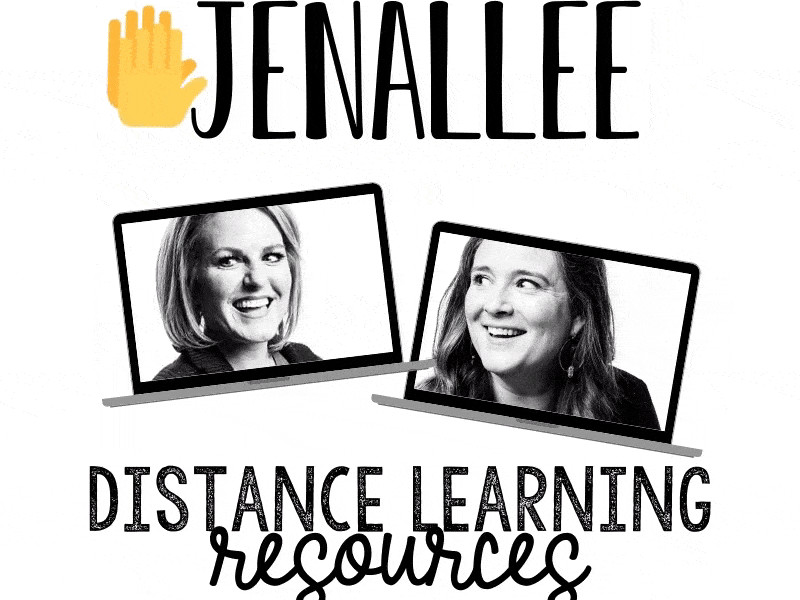Remote Learning in Action: Tips and Tools from Eagle Mountain Saginaw ISD
Learn how to teach and grade remote learning assignments and explore tools for K12 remote teaching and learning.

We first want to applaud teachers and school administrations for everything you are doing to make remote learning successful in homes across America. We are in awe of the long hours of speedy work being done to ensure students have the opportunity to learn. We also want to give praise to the parents and students working to learn, while at home, during Covid19. Your ability to adapt and juggle everything happening at home and work is a talent that we find astonishing.
Below are some highlights of how Eagle Mountain Saginaw ISD teachers are navigating this new remote learning journey. (For more specific content/curriculum information, please see the district’s Distance Learning webpage.)
5 WAYS TO TEACH REMOTELY IN ELEMENTARY GRADES
Here is what Eagle Mountain Saginaw ISD elementary teachers do daily as part of their remote teaching:
- Produce daily video morning messages for students where they say hello and guide them through their work for the day.
- Hold weekly meetings with all of their students through video conferencing. Some even schedule a recess or “show and tell” time to keep the kids engaged and interacting with each other.
- Teachers share a list of five activities for students on a “board” that was created by the district. The expectation is to complete at least one activity from the five choices on the choice board. There is also an optional extension activity included.
- As the district adds more remote learning days, we are moving into more required work, which we refer to as “may do” and “must do” activities. The teachers provide mini lessons for each day that come from the online textbook or a recorded lesson that they created.
- On Friday, there is a performance task for the students to complete based on the learning objectives from the week. In addition, there is a family fun/extension activity provided on the lesson plans.
5 WAYS TO TEACH REMOTELY IN SECONDARY GRADES
Here is what Eagle Mountain Saginaw ISD secondary teachers do daily as part of their remote teaching:
- Teachers hold daily/weekly virtual office hours for students.
- Students check in at least twice a week with their teachers.
- Teachers present mini lessons with performance tasks. These are “must do” lessons and activities for the students.
- If students would like further learning opportunities, they are provided additional enrichment activities through choice boards as “may do” options. These options are provided by the district curriculum department like this math example for choice/enrichment activities.
- Teachers are still preparing AP students to take the AP exams while teaching via Microsoft Teams or Canvas.
HOW TO GRADE REMOTE LEARNING ASSIGNMENTS
Now for the big question: how will these remote learning activities be graded? Our philosophy is to create as much equity and opportunity for success as possible. Here is how we are assessing remote learning assignments in Eagle Mountain Saginaw ISD:
- Students are encouraged to submit daily/weekly assignments and artifacts of learning, communicate with their teachers, ask questions and participate in calls/meetings.
- For summative grades, students are given a performance task and will have opportunities to resubmit for mastery after receiving feedback from the teacher. Repeated attempts will not penalize the students or lower the grade.
- Teachers will continue to provide feedback to students and parents through numerical grades that will indicate a student’s progress to mastery of a standard in a subject. The numerical grades will be updated into a PS (Pass: 70 or higher) or FL (Fail: 69 or lower) at the end of the semester and will not count towards a student’s Grade Point Average or Class Rank Calculations.This grading model is designed to provide for the accountability of a student’s learning while remaining flexible and supportive of the home learning environment
- Here is a link to the newly released Interim Grading Regulations for the Spring Semester.
- Communication and patience is key, more now so than ever before. Students need emotional support as well as academic support during these unknown times. Our teachers are encouraged to grade with grace.

TOOLS WE’RE USING FOR REMOTE LEARNING
In an attempt to help teachers across the world in remote learning situations, we want to share the educational tools we are using, how we are holding trainings, and resources to help.
Virtual Meetings/Trainings on Microsoft Teams
Our secondary teachers are meeting virtually with students through office hours. Many of our teachers are doing this by utilizing Microsoft Teams.
Tools and ideas to transform education. Sign up below.
Why Microsoft Teams?
Due to the security Microsoft offers, Teams is a great option for virtual meetings. It offers secure links, so no video bombing is happening in these meetings. It also boasts screen sharing, Microsoft Whiteboard, Stream recordings, hosts up to 250 participants, chat feature, and more. Click here to access the MicrosoftEDU quick start guides. Check out this YouTube playlist of Microsoft Teams quick tip videos from Microsoft Product Manager, Mike Tholfsen.
We like the versatility that is available with these meetings. We have found there are 4 different ways to schedule meetings. For directions on how to schedule meetings in Teams, visit this Jenallee Wakelet collection.
In addition to offering virtual meetings for our students, we also share rules about good Teams etiquette. Students know the rules, procedures, policies, and expectations of in-class behavior expectations. The same rules are to be practiced when attending virtual meetings. We shared the following graphic with our teachers to set the norms with their students. Click here for your own copy.
Morning Message on Flipgrid
Each morning our elementary teachers share a recorded message with their students. This message is to be a video of encouragement and directions for their day of work. Teachers use a variety of tools for this message, but one of their favorites is Flipgrid.
Flipgrid announced two new updates:
- They extended the record time from 5 minutes to 10 minutes.
- You can now record your screen in Flipgrid.
We love utilizing this tool for a daily message or contact with students because it offers the teacher the ability to:
- Record up to a 10-minute message
- Record the screen
- Record a whiteboard of explanation
- Share links and resources though the topic with the students
- Students can respond and check-in
- Disco Library is available with pre-made home learning topic
Visit Jenallee Wakelet to see more about using Flipgrid for remote learning.
TOOLS FOR CONTENT DELIVERY
At Eagle Mountain Saginaw ISD, we utilize a few different tools for content delivery: Microsoft Teams, Canvas, Flipgrid, and Seesaw. Whichever tool the teacher was utilizing in their classroom is the tool they use for remote content delivery.
Content Delivery on Microsoft Teams
Many teachers use Microsoft Teams in grades K-12. Through Teams, students communicate using the chat feature, meetings, and posts. Teams assignments are a great way to stay organized and know exactly what is due each day. Teachers can easily see what has been turned in and viewed, leave feedback, and grade assignments from the Grades tab in Teams. Click here to see our overview of Microsoft Teams.
Content Delivery on Canvas
Teachers in our district also use Canvas. This is a robust Learning Management System (LMS) that offers teachers the ability to create lesson modules, assignments, and grade easily from within the LMS. Canvas also now integrates with Teams. Check out this video for directions.
Content Delivery on Flipgrid
Teachers can use Flipgrid for morning messages, as a discussion board, as a way for students to respond to reading prompts, for collaborative projects with students, or even as a platform for reading stories to students virtually. The possibilities are endless. And now, teachers and students can even record their screens for lesson creation or for showing a process or explanation. Teachers also have the option to attach resources to topics within Flipgrid. Students are able to demonstrate their knowledge in a Flipgrid response, while teachers moderate student video responses so that students are not able to see each other’s replies. Oh, and don’t forget the Disco Library! The Disco Library is filled with pre-made discussion ideas, resource-packed, age- and subject-specific topics from other educators around the world. Every topic can be modified to meet the specific needs of your learners -- or simply launched as-is. Also, check out the weekly “Topic Playlists” from the inspiring Disco Library partners. It is a great way to grab ready-made lessons to add to your grids. New to Flipgrid? Check out the Educator’s Guide to Flipgrid and you’ll have #Flipgridfever in no time.
Content Delivery on Seesaw
Some of our K-5 teachers use Seesaw to assign activities to students. With Seesaw, teachers can empower students to create, reflect, share, and collaborate. Seesaw is a platform for student engagement that uses creative tools to take pictures, draw, record videos, and more to capture learning in a portfolio. Teachers find or create activities to share with students. Families only see their child’s work after using the “home code” and can leave comments and words of encouragement. Students have the option to draw, record audio/video, edit activities, etc. It is a great interactive tool for elementary students. Seesaw offers teachers a community library full of lesson templates to assign to their classes through activities. The activities are editable, engaging, and a great way to get lesson ideas for the virtual classroom.
MORE RESOURCES

Looking for more information regarding remote learning? Check out the Jenallee remote learning Collection. See more remote learning blogs on our website at www.thejenalleeshow.com.
Jeni Long and Sallee Clark are Instructional Technologists in Eagle Mountain – Saginaw ISD. Known as the dynamic duo, #Jenallee, they have over 36 years of education experience together. They are passionate about empowering every student to own their learning and equipping every teacher with the skills necessary to make this possible.
